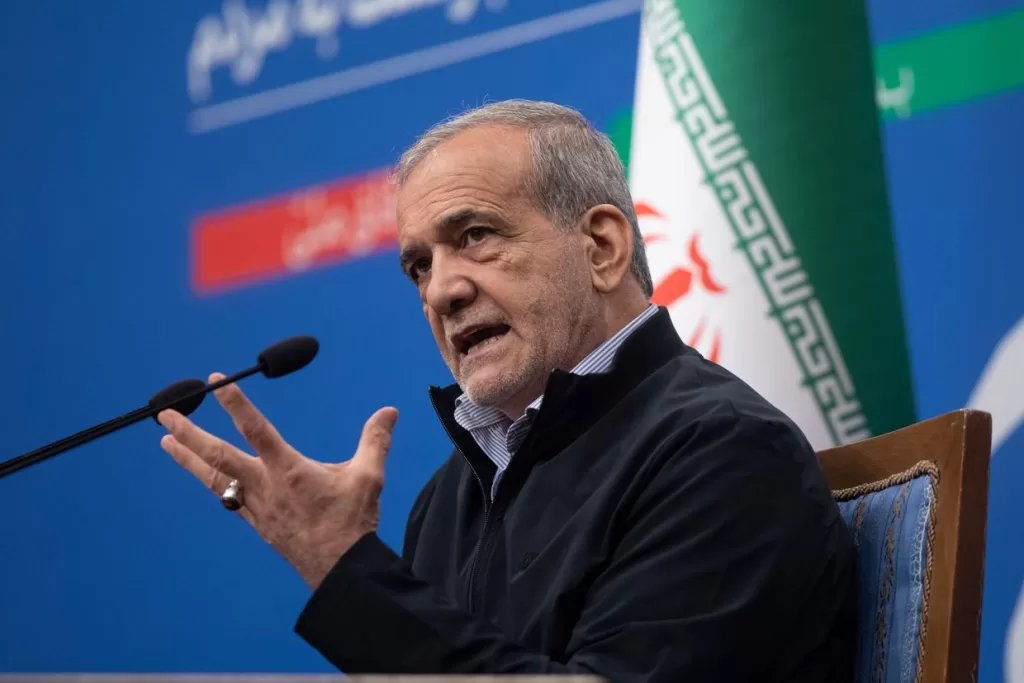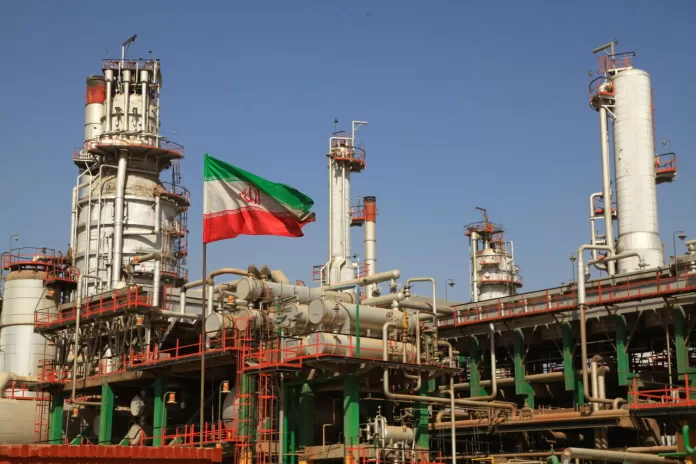Iranians for millennia have been doing business with the world during imperial and nation-state eras in good and troubled times. Iran has been under American and western sanctions for almost fifty years but it has developed sophisticated mechanisms to survive by using a shadow infrastructure. Iran has developed a complex web of shell companies, middlemen, money transfers, ship to ship oil transfers and rebranding of Iranian oil to bypass international shipping, insurance, and banking systems. Ninety percent of Iranian oil is destined for China and Iran offers about fifteen percent discount to China. This serves the interests of both countries.
In 2018, when President Donald Trump pulled out of the Iranian nuclear Joint Comprehensive Plan of Action (JCOPA) deal and snapped back sanctions, Iranian oil revenues sharply declined but Tehran quickly recovered by rapidly expanding the shadow infrastructure. Western sanctions axe also fell on Russia after the Russian invasion of Ukraine in 2022. Russian oil was capped at $60 per barrel when international price was around $85 per barrel. Russia approached Tehran to get its oil to new markets using Iranian shadow networks. This coordination helped both Iran and Russia and, in the process, China got cheap oil from both sanctioned countries in addition to Venezuela at discount price saving about ten billion dollars in 2023. ‘Dark Fleet’ refers to tankers that transport sanctioned oil using old and decommissioned tankers, forging or tampering documents of ownership and insurance, frequently changing ‘flags of convenience,’ tampering with location signals by turning off ship’s Automatic Identification Signals (AIS) and hiding the oil origin by ship-to-ship transfers. Some estimate that around one thousand vessels are now part of the dark fleet. Most of the companies operate from Gulf countries and Greece. Most ship-to-ship transfers occur in Singapore and Malaysian waters and Iranian oil is branded as coming from Malaysia, Iraq and the Middle East and goes to small independent Chinese refineries called ‘teapots’ to avoid exposure of large state-owned Chinese refineries to sanction regime.
Over the years, Beijing and Tehran have developed an oil trade system that bypasses western banks and shipping services. Russia adopted Iran’s methods when it came under sanctions after its invasion of Ukraine. China and India became biggest customers of cheaper Russian oil. Iran, Russia, and China are now part of a triangle that has created an alternative system of oil transport bypassing existing international system that serves all three parties. They use vessels of dark fleet and payments are denominated in Chinese currency. Iran receives payments in Chinese currency renminbi using small banks. This strategy allows China to avoid exposing its large international banks to the risk of U.S. financial sanctions. Chinese currency has its limitations as it is not freely tradeable on the international market. China’s renminbi-denominated trade is valuable only in bilateral trade. Iran uses the payments made in renminbi in three forms. It buys Chinese goods, keep assets in Chinese banks and builds its foreign exchange reserves in renminbi. In 2023, Chinese exports to Iran were worth $10 billion. The three major items are vehicles and spare parts, heavy machinery, and electronics. In 2022, Iran bought $2.0 billion worth of machinery and $1.43 billion worth of electronics from China. Financial transactions between the two countries are opaque and difficult to assess.

Oil sanctions are a complex business with converging and competing interests of several countries. One example will show how these factors play on the internationals scene and it also shows how principle-client relations change with a changing environment. In September 2023, oil prices surged to $98 per barrel (drop in U.S. inventory was the major factor for the price surge). President Joe Biden was concerned about the dreadful number of over $100 per barrel in an election year of 2024 and announced six months waiver of sanctions on Venezuela in October 2023. It was clear that most of Venezuelan oil would go to the United States (India was the second beneficiary) and stabilize the oil prices.

China was the main destination of sanctioned Venezuelan oil and with sanction’s waiver that oil flowed to U.S. and India. This provided room for maneuver to Tehran. It was offering $13-15 discount per barrel to Chinese refineries. With the drying up of Venezuelan supply, Tehran first dropped the discount to $10 per barrel and then $5 per barrel. Chinese refineries were forced to pay higher prices and Tehran increased the profits. Saudi Arabia and United Arab Emirates imported cheap Russian and Iranian oil for domestic power plants and exported their own surplus oil at higher prices on the international market. Great power rivalries have provided Tehran with more room for maneuverability, and it is shrewdly using these fissures to its advantage. Tehran will continue to expand its oil export through alternative infrastructure if China is using cheap oil options from Iran and Russia to fuel its economy. This approach not only serves short term Chinese interests but creates room for expansion for an alternative renminbi based financial system where more countries trade in local currencies and renminbi takes a larger share of their foreign reserves portfolio at the expense of the dollar.
The unexpected significant cooling down of Chinese economy in the summer of 2024 will decrease the oil demand and fall in oil prices that will cut though Iranian profits. The newly elected Iranian President Masoud Pezeshkian is aware of a worsening of existing economic crunch if Chinese oil demand slows down. This is one of the reasons that he is sending signals to Washington and European capitals to re-start negotiations to get some sanction relief. United States in the election year has significant limitations in preventing Iranian oil reaching international markets. The dark fleet infrastructure is now so large that sanctioning individual companies, or a few ships, has no impact. Like any other contraband, the money to be made from peddling sanctioned oil is so huge that there is no shortage of companies willing to make a quick profit. The U.S. can tighten the screws but taking out a large amount of Iranian oil from the market can easily push the oil price over $100 per barrel that no U.S. president will risk in an election year. Direct interception of tankers carrying Iranian oil also risks confrontation with Tehran and in view of Israel-Hamas war, Washington is trying to avoid escalation. Tehran has shown the willingness to up the ante when its economic lifeline is threatened.
In 2023, U.S. seized the tanker named Suez Rajan carrying Iranian oil and took it to the port of Galveston in Texas where oil was unloaded. In January 2024, Iran retaliated by taking over the same tanker now renamed St. Nikolas carrying Iraqi oil to Turkey and took it to an Iranian port. Iranian behavior of the last few years shows that Tehran will not desist from brinkmanship when its vital interests are at stake.
“You can’t get fat with one mouthful”. – Chinese proverb
Notes:
• Congressional Research Service report in 2024 provided details of complex system of oil transport. https://crsreports.congress.gov/product/pdf/R/ R47962/2
• Oil data firm Vortexa is a reliable source for the details about dark fleet. https://www.vortexa.com/insights/crude/iraniancrude-exports-rise-lifting-its-ranking-in-opec/
• Atlantic Council experts have also worked on the subject. https://www.atlanticcouncil.org/blogs/new-atlanticist/the-axis-of-evasion-behind-chinas-oil-tradewith-iran-and-russia/





